Mixed media offers a huge variety of exciting approaches. To find out which ones work for you, textile artist Deb Cooper recommends taking the time to experiment and play. She’s found that the best way to discover which processes to use is to simply try them, mix and match different techniques, and see which results work out best.
Known for her subtle colour palette, Deb gives new life to old materials – with a suggestion of hidden memories within.
Using natural dyes, ink and mark making, she stitches together small sections of recycled fabric, old book pages, and vintage textiles, including deconstructed lace and doilies. Sometimes machine embroidery is added into the mix, but the key element is hand stitch, which Deb uses to bring together the layers as one unified piece.
Rather than relying on bold colour, Deb chooses faded, natural tones. It’s the line, flow and textured layers that convey the stories within her compositions.
When you see her work, you’ll begin to understand Deb’s love of aged and worn materials. The gentle colours and calm tones draw you in to view each piece more closely. You’ll want to study the layers and marks, and try to figure out the layers of meaning and emotion within the work.
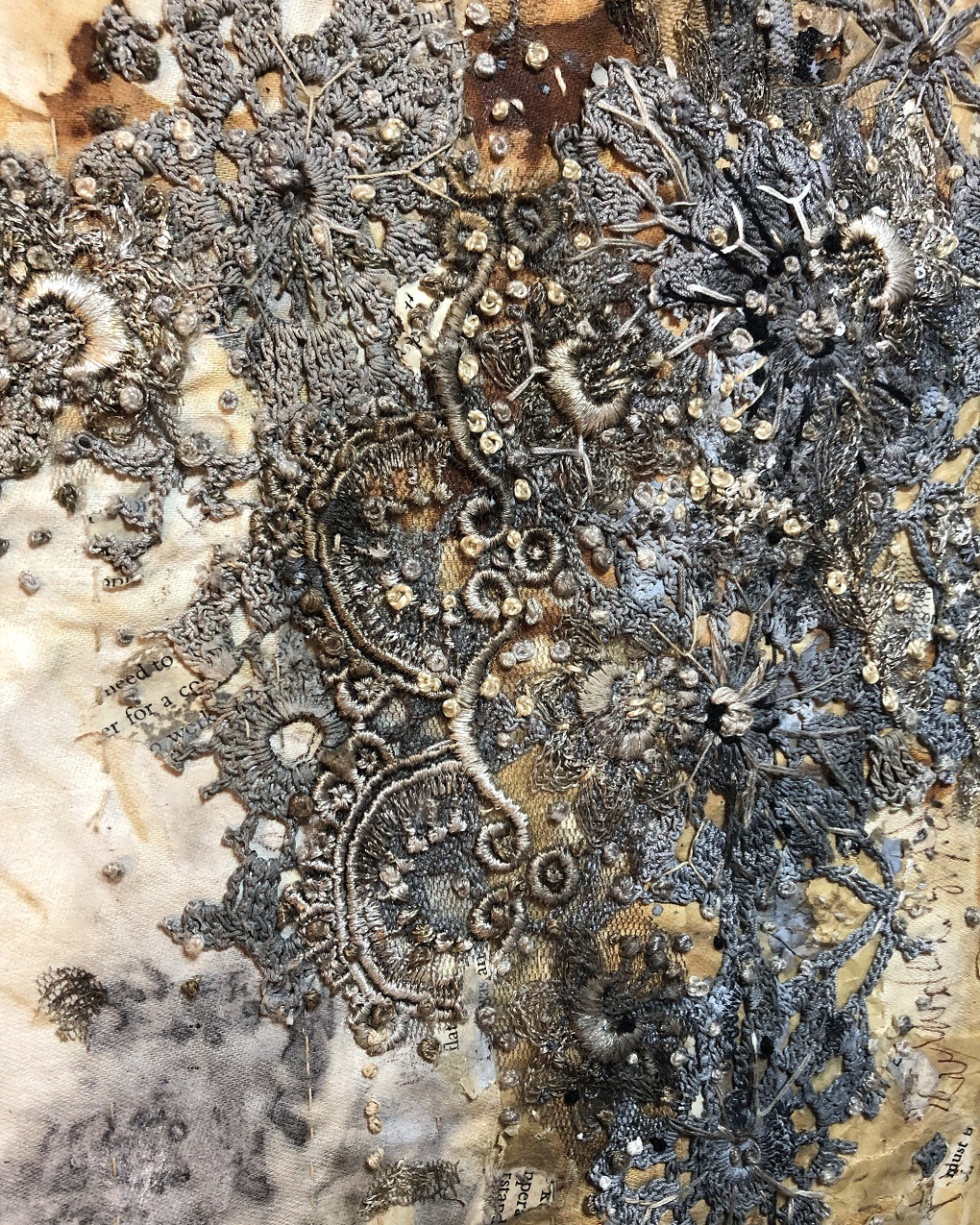
A second life
Deb Cooper: My work is like a recipe, spell or talisman – I bring elements together to create an emotion. I tend to work in an instinctive, semi-abstract and subtle way. However, much of my work is inspired by nature and the environment. Plants, meadows, landscapes, old buildings and architectural details all play a part; those elements of my work are more clearly read.
Being drawn to a layered look, I build up small, understated elements. I include layers of fabrics, papers, paint, ink, dye, mark making and stitch. I want to conjure up a feeling like a forgotten memory or hidden treasure, something both ancient and alien.
My work is often described as having an antique feel, and I think this helps with the response I am trying to evoke.
Deb Cooper, Textile artist
My compositions, I hope, draw you in for a closer look, so you can work out its meaning and decide how it makes you feel.
I rarely buy new materials. I prefer to source vintage and second hand, giving these soft, faded fabrics a second life. I get a great sense of achievement from using old, recycled and repurposed items in my art. We’ve all become much more aware of the environmental impact of the textile industry, and many artists want to work more sustainably. I find that recycled fabric has so much to offer. There’s the simple pleasure of it – anyone who has stitched on vintage linen cannot deny its soft and superior handle. And older natural fabrics also tend to take dye more readily.
Vintage materials also speak to me aesthetically. I much prefer the aged and worn, as opposed to shiny and new. These textiles have a story of their own, a history and something to say. They whisper their tales, making you want to know more.
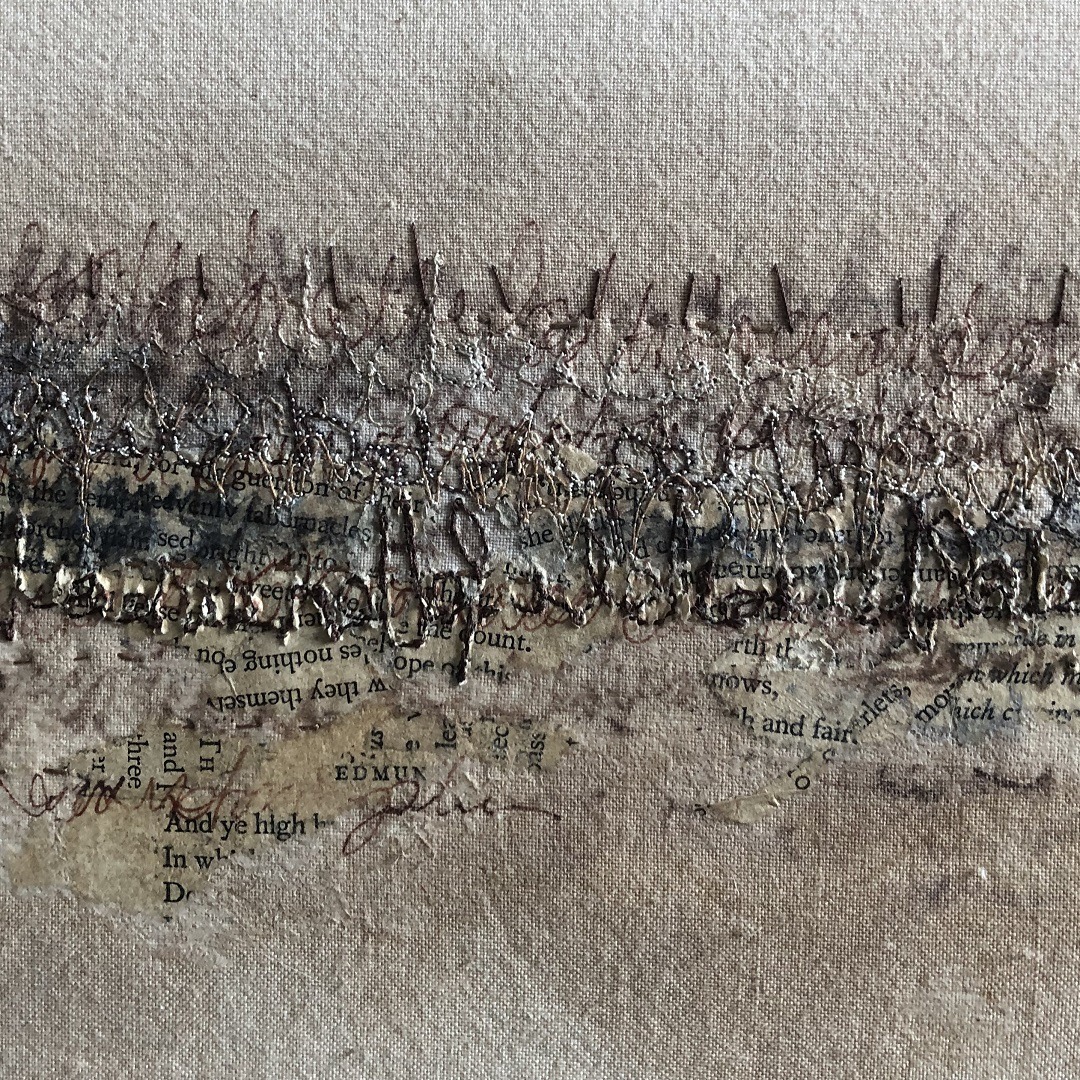
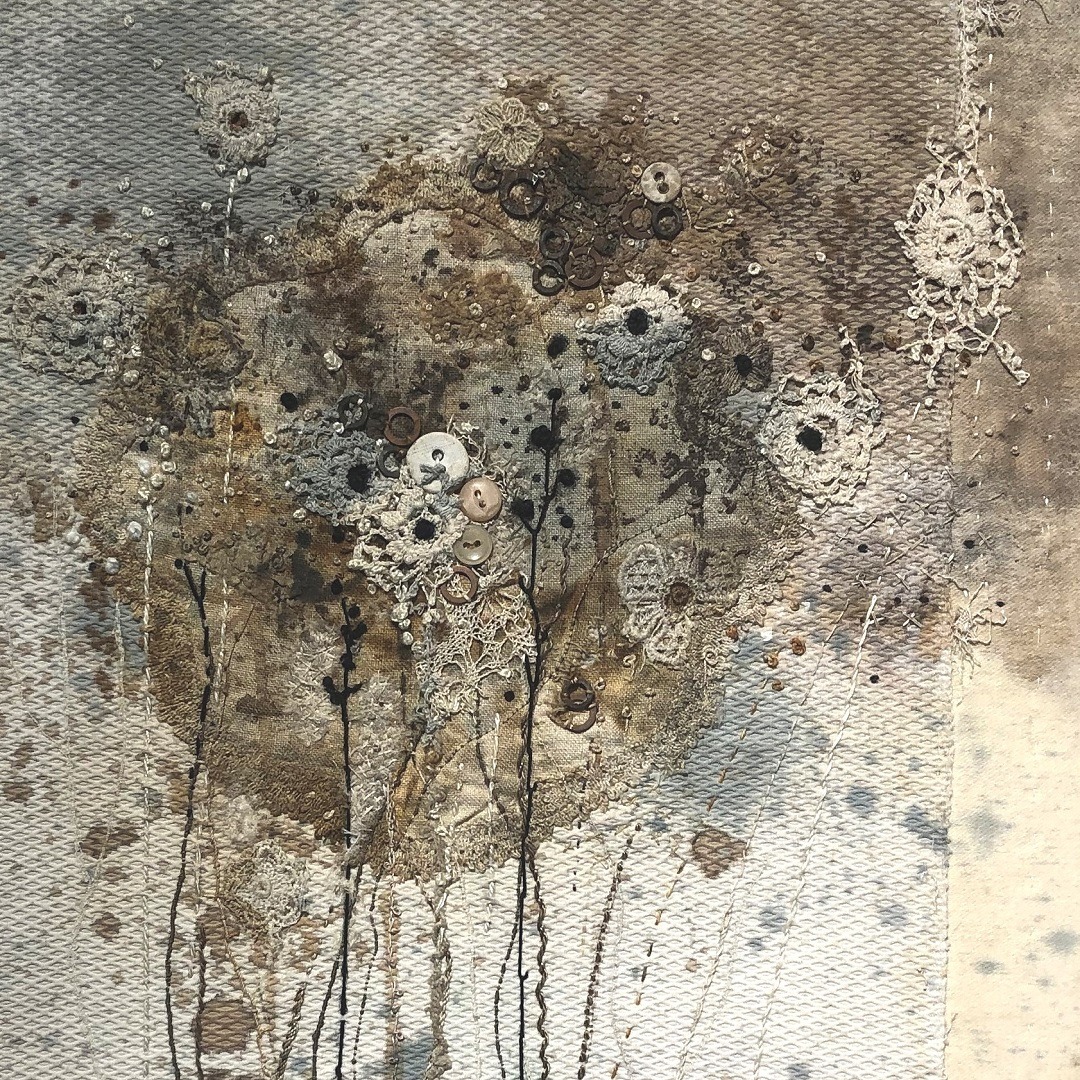
Natural tones and subtle colours
My colour palette – or in some people’s opinion, the lack of colour – always seems to be commented on. There are several reasons I’m drawn to these subtle colours. I like the calm nature of the tones. They don’t shout, they sing softly. I do use colour, but it’s limited and subdued.
I find that the subject matter and materials used influence the colour range I use. I would say I draw rather than paint, and the marks and textures are critical – using tone and texture is more important than strong colours.
Natural dyeing is another influence. Rust and plant materials both play a large part in my work. I am not at all studious or scientific, and I’m terrible at keeping dye records, but I read a lot about various techniques. Experimenting and trying new combinations is always great fun. The colours are often delicate or sludgy, but I’m happy with that. I often use modifiers to shift the colour range slightly and tea-dyeing is my go-to technique if I am not happy with how something looks.
I create art in a very intuitive way, responding to how things are working together in each composition as it develops.
Deb Cooper, Textile artist
I rarely make preliminary drawings, unless it is for a commission where I need to try and convey an idea to a client. But sketchbooks are my play space, and there’s always one on my desk. I use them to work on ideas and make observational sketches, which filter through to larger artworks.
I’m a big believer in having an element of creative play to keep growing and I love experimenting with new processes. Trying out different mediums helps, too.
An idea might start with a few written words in a notebook – sometimes leading to a mind map to push my thoughts and ideas further. Quite often I work in groups or series based around a loose theme, and my artworks often feed one another.
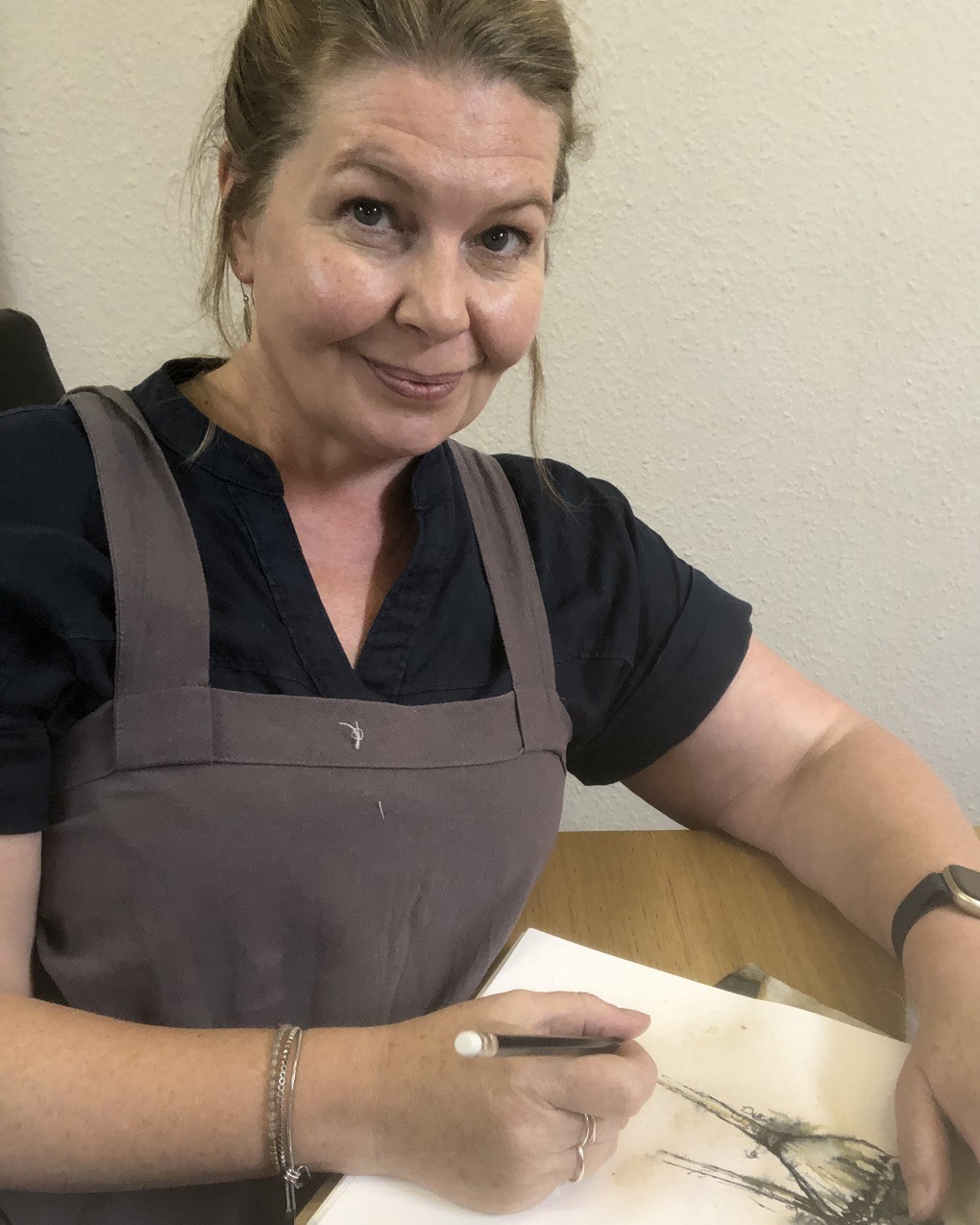
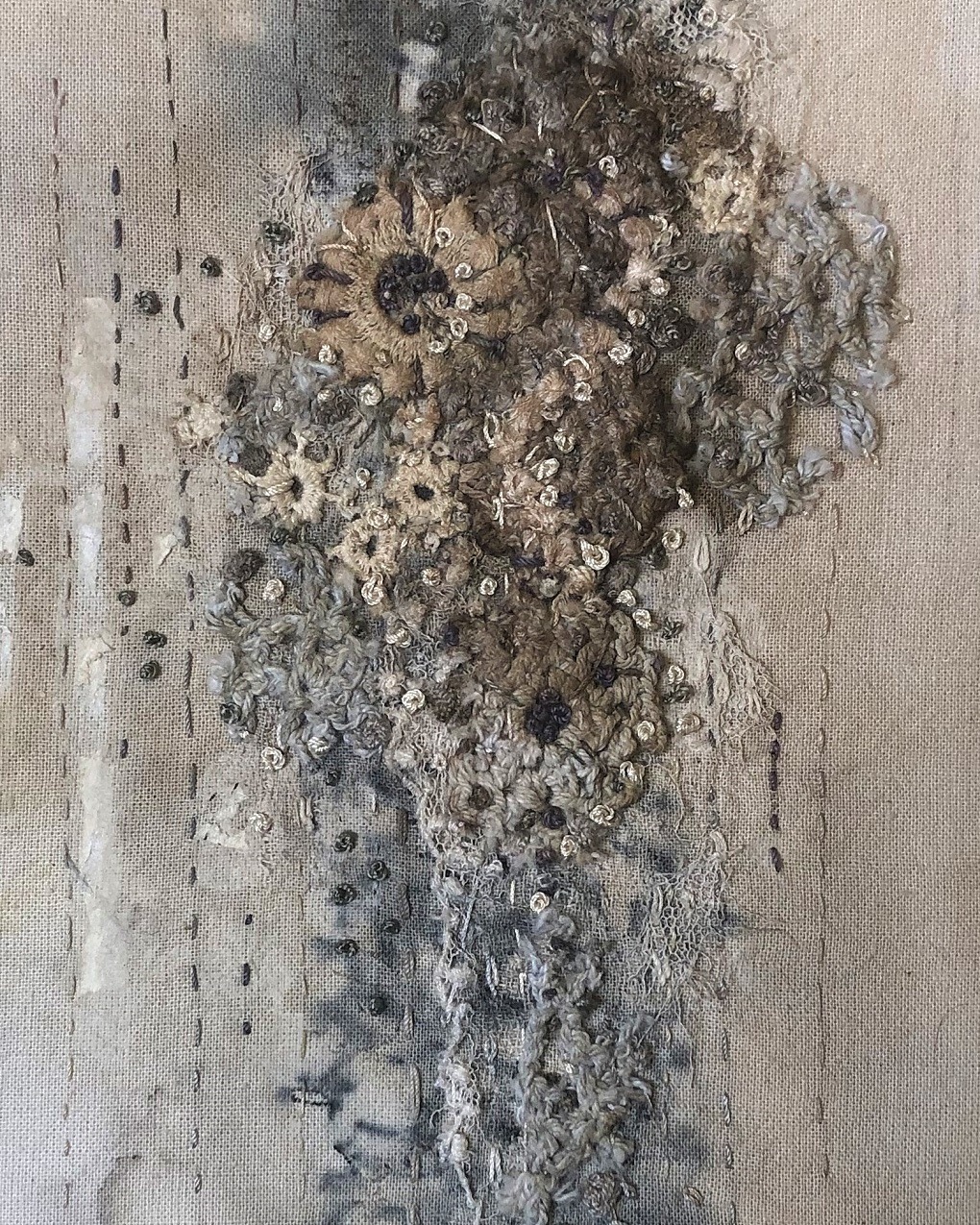
Layers connected with stitch
When it comes to creating work, I tend to build things up in layers. Quite often this will be on a dyed background fabric. I’ll add reclaimed fabrics and papers, including things like sewing pattern tissue, old sheet music paper, deconstructed doilies or vintage lace. Pressed flowers and foliage often appear, as do found items like rusty washers and scraps of paper.
I use both free motion machine embroidery and hand stitch, but rarely machine stitch on its own. I prefer hand stitching as it can blend the layers and create detail.
Another regular addition is asemic writing, a form of unreadable ‘text’ where the viewer gains context through its aesthetic and emotional presence, rather than any verbal meaning. For the viewer, it’s like there’s a story there but you’re not given the words – it’s up to you to discover it…
Using mixed media, I’m trying to create a certain look rather than perfect a technique.
Deb Cooper, Textile artist
I’m not sure but, maybe, I find it easier to include lots of different textures and techniques because I limit my colours. I enjoy the process of mixed media – for me, it’s not about the speed of getting the finished result. It is important to think about how things work together.
As much as I love mixed media, there is always a balancing act – to create lots of interest but not add too much to a piece. I respond to each layer and think about what I need to add. The hand stitching tends to be done last and is the thing that brings it all together.
It’s hard to choose my favourite artwork – it’s a bit like picking your favourite child! I’m particularly proud of a group of small works that I started in 2020. The 36…..6×6 series was a self-imposed project that started 36 weeks after the beginning of the first Covid-19 lockdown in the UK. It’s a collection of 36 exploratory works, all being six by six inches, made using varied techniques and materials.
Although the artworks are cohesive as a group, they explore many of my favoured techniques, but on a small scale that was achievable in larger numbers. At the end of the process, I created a little book to document the project, which I offered for sale via my website. Of course, it wasn’t possible to show the works in person at the time, so this was a great way to share my work with a wider audience.
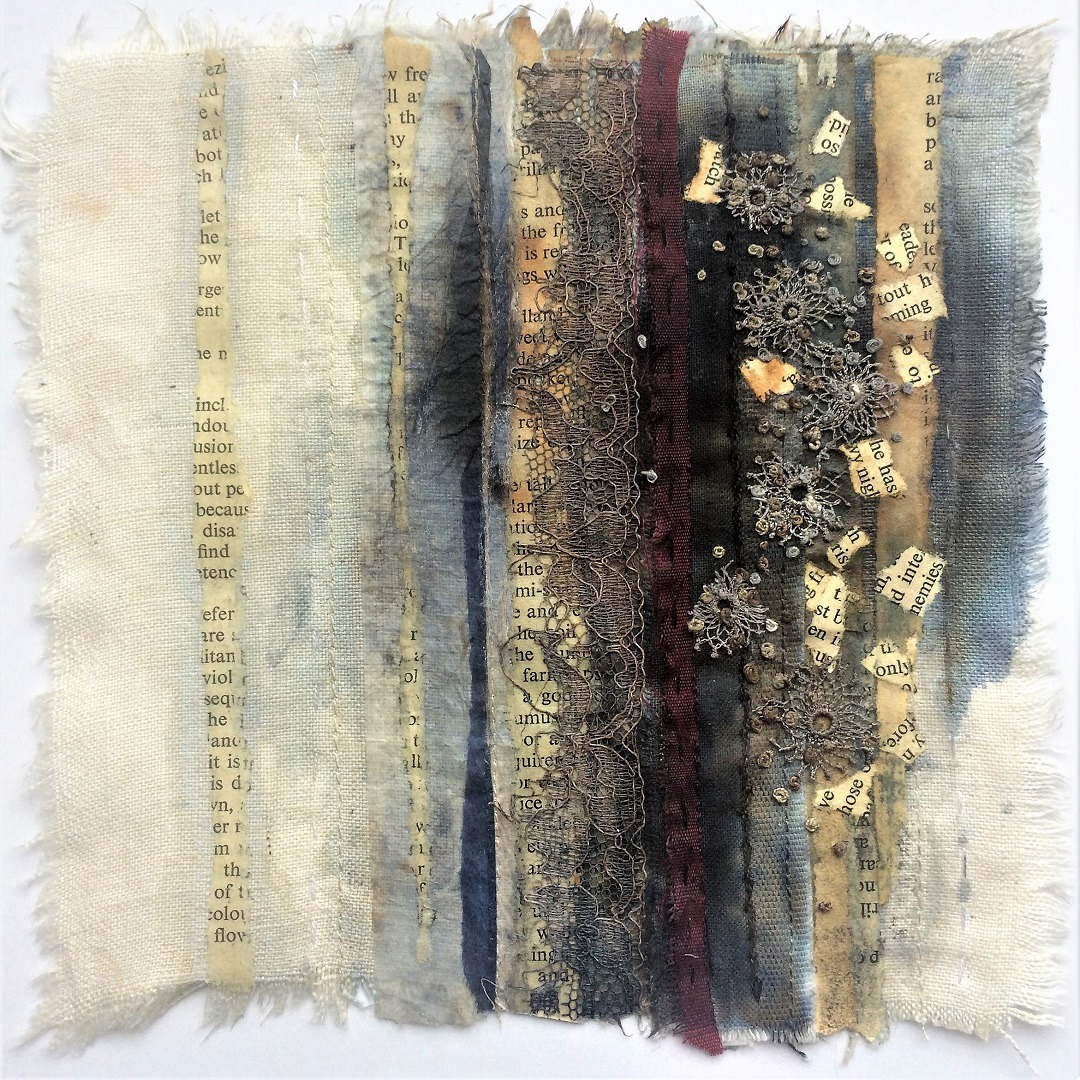
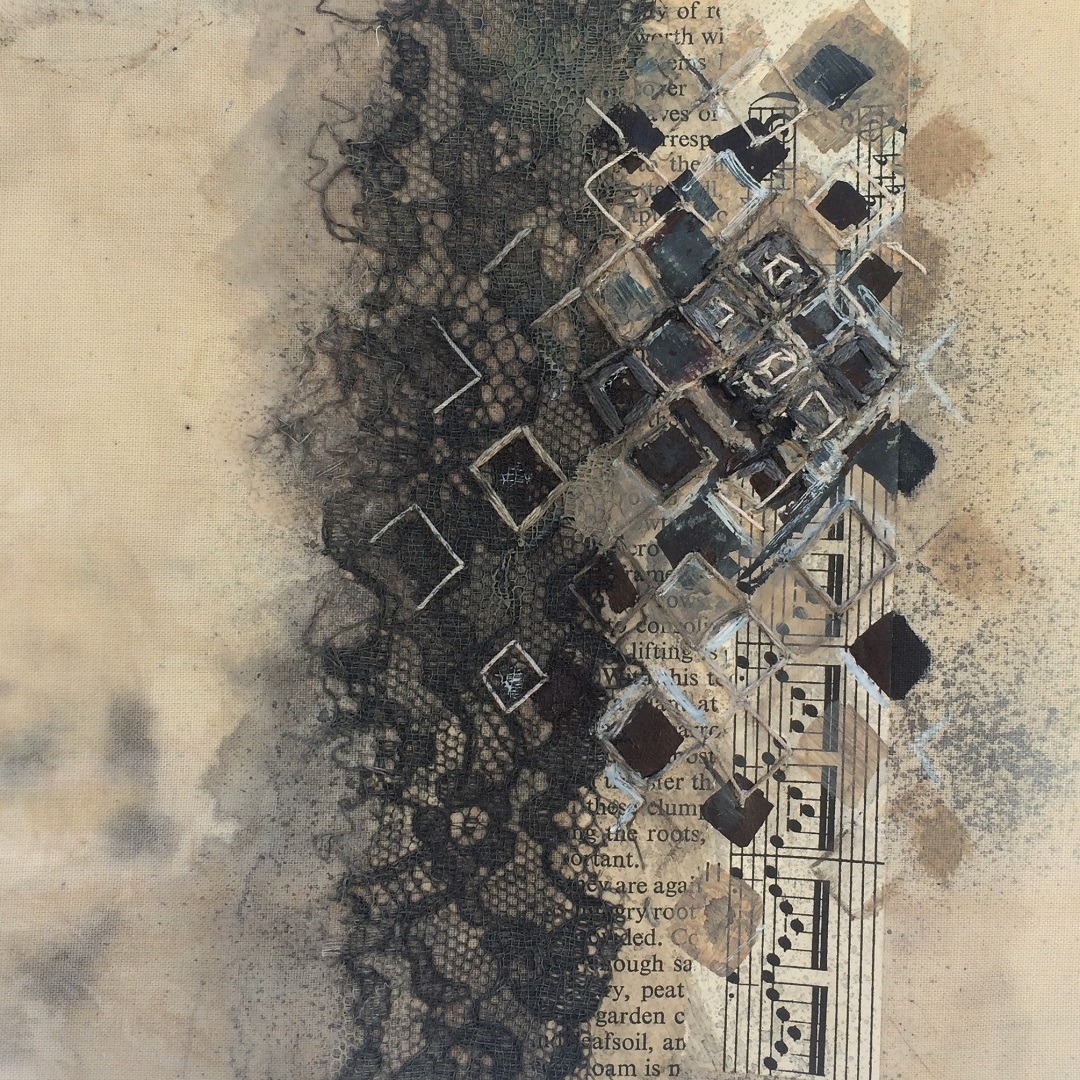
Expanding horizons
I find that art fairs are a great way to get out and interact with the outside world. I do feel it’s important to take my work to a larger and different audience. It gives me a different perspective.
Working as a textile artist can often be a very isolating and inward looking practice, so I make the time to engage with others.
Deb Cooper, Textile artist
You do have to be a bit thick-skinned: not everyone will love your work or want to interact with it or with you. But I focus on reaching that one person who loves it – they might never have found me if I was still sitting at my desk worrying about what people think. Fairs are also an opportunity to sell the smaller items that I enjoy creating, making my work accessible to more people.
Workshops are also essential for me for several reasons. They’re a chance to spend time with like-minded people who are interested in what I do. I’ve learnt a lot from attending workshops myself and can appreciate their value to both experienced makers as well as those who fear being creative and need a little encouragement.
The income generated from leading workshops allows me the opportunity to have the space, both physically and mentally, to work. Preparing for workshops and art fairs is time consuming, and I can’t deny that I’ve often said I want more time to work on larger art works, but these outside activities have an important role to play in my art practice.
Running workshops also help me to review my own work and look at things with fresh eyes. At the moment, I am working with a community garden group, creating colours from the site, which has allowed me time to think more about using natural dyeing in my own practice.
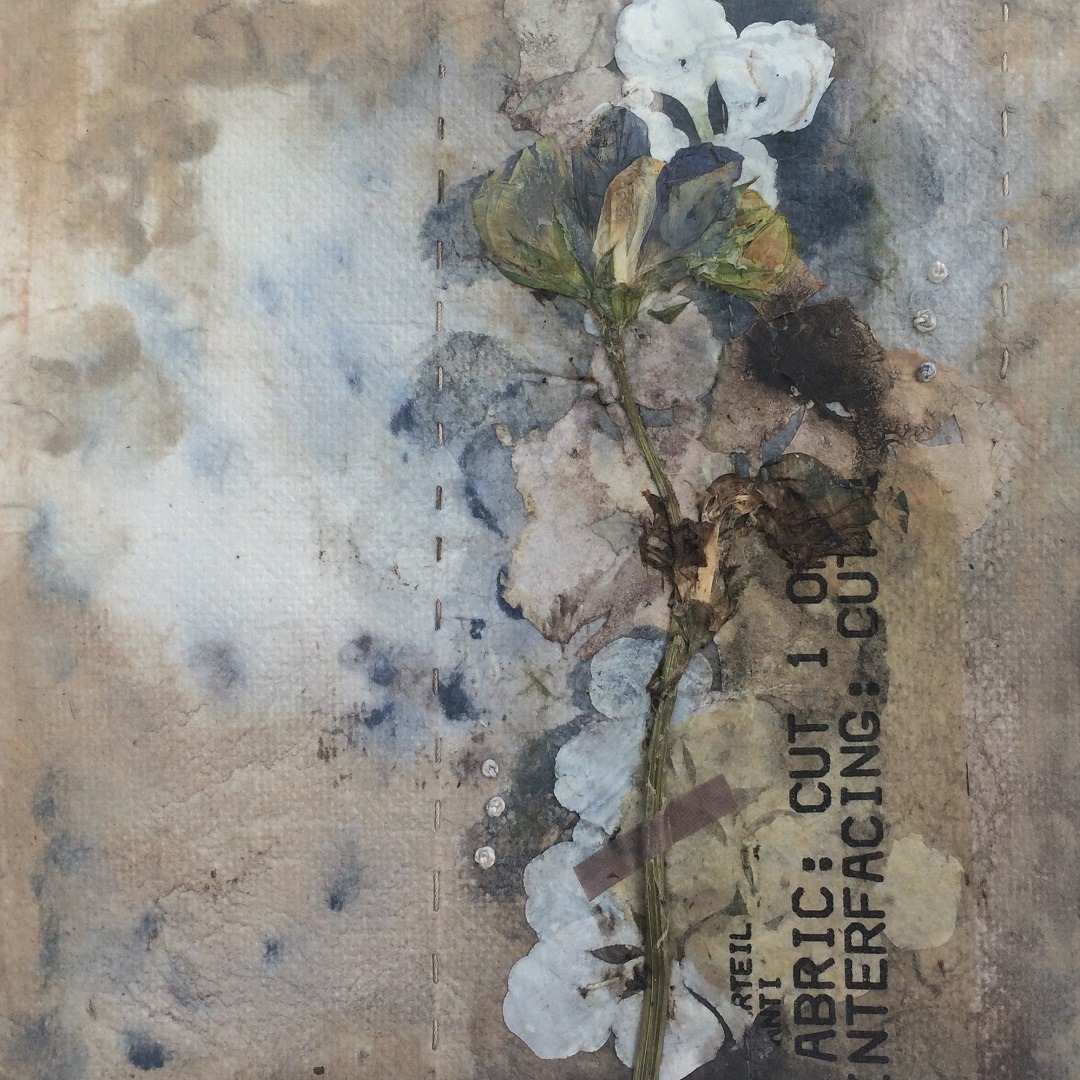
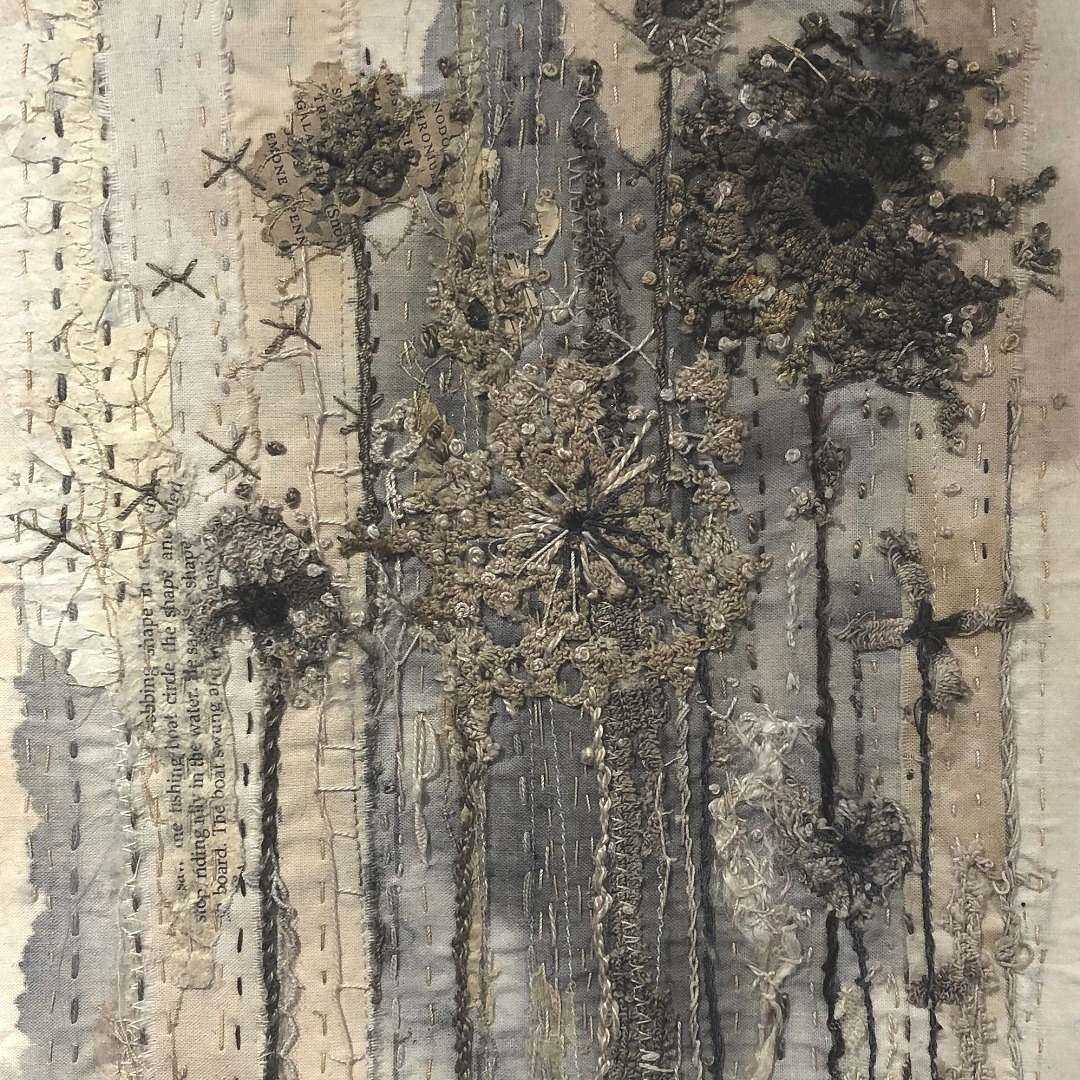
Learning through play
As a child, I was surrounded with fabrics, threads and buttons. I grew up with textiles and making, and one of my earliest memories is playing with the button box at my grandma’s house. My mum was a skilled dressmaker and is now a prolific embroiderer. However, I wasn’t a good pupil and didn’t have the attention span for embroidery. I just wanted to draw or play in the garden instead. I went to art college to study fine art but didn’t complete my degree. Life got in the way and the world of work pulled me down a different path.
Eventually, I found the patience for stitching. While working, I continued to be creative, attended classes and workshops and joined local textile and embroidery groups. These groups gave me access to more knowledge and specialist workshops. The two artist tutors who have influenced me the most are Gwen Hedley and Shelley Rhodes. I love the way they combine mixed media, drawing and stitching.
In 2019, just before my 50th birthday, I decided that it was time to work at something I love. It was a bit of a ‘now or never’ moment. Leaving my role as an operations controller for a telecoms technology company, I became a full-time freelance artist and maker. I’m loving it and continue to learn, experiment and create every day.
Mixed media does give you lots of options but, if you’re someone who gets distracted by all the techniques you have at your fingertips, I suggest you take some time to experiment and play. Mix some different techniques together and see if you like how they work. If you like a particular combination, do some more. Remember to step away from your work from time to time, and go back with fresh eyes.
Rules are for breaking and if something doesn’t work, it’s only some paper, fabric and a bit of time. I say give it a go and figure out what you like.
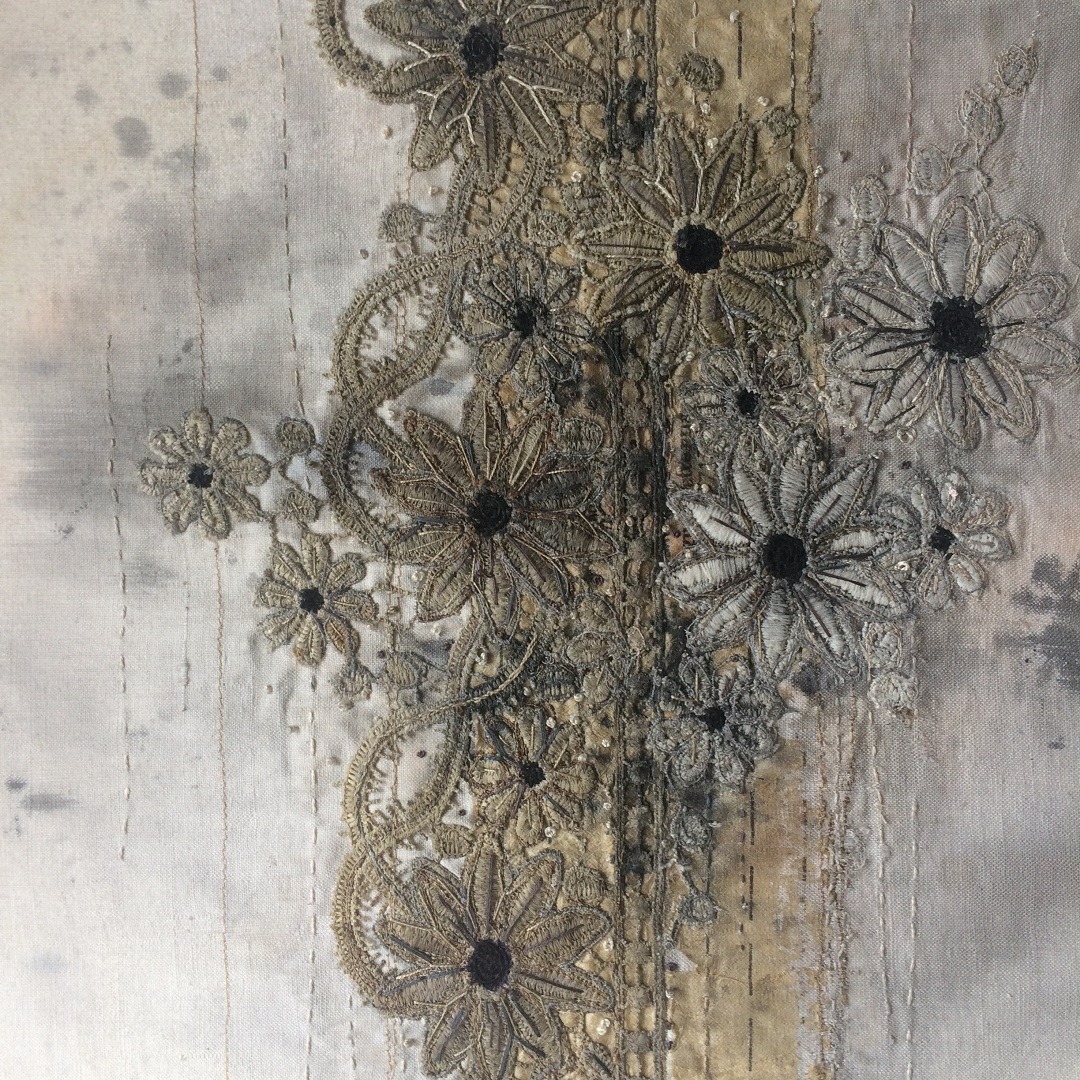
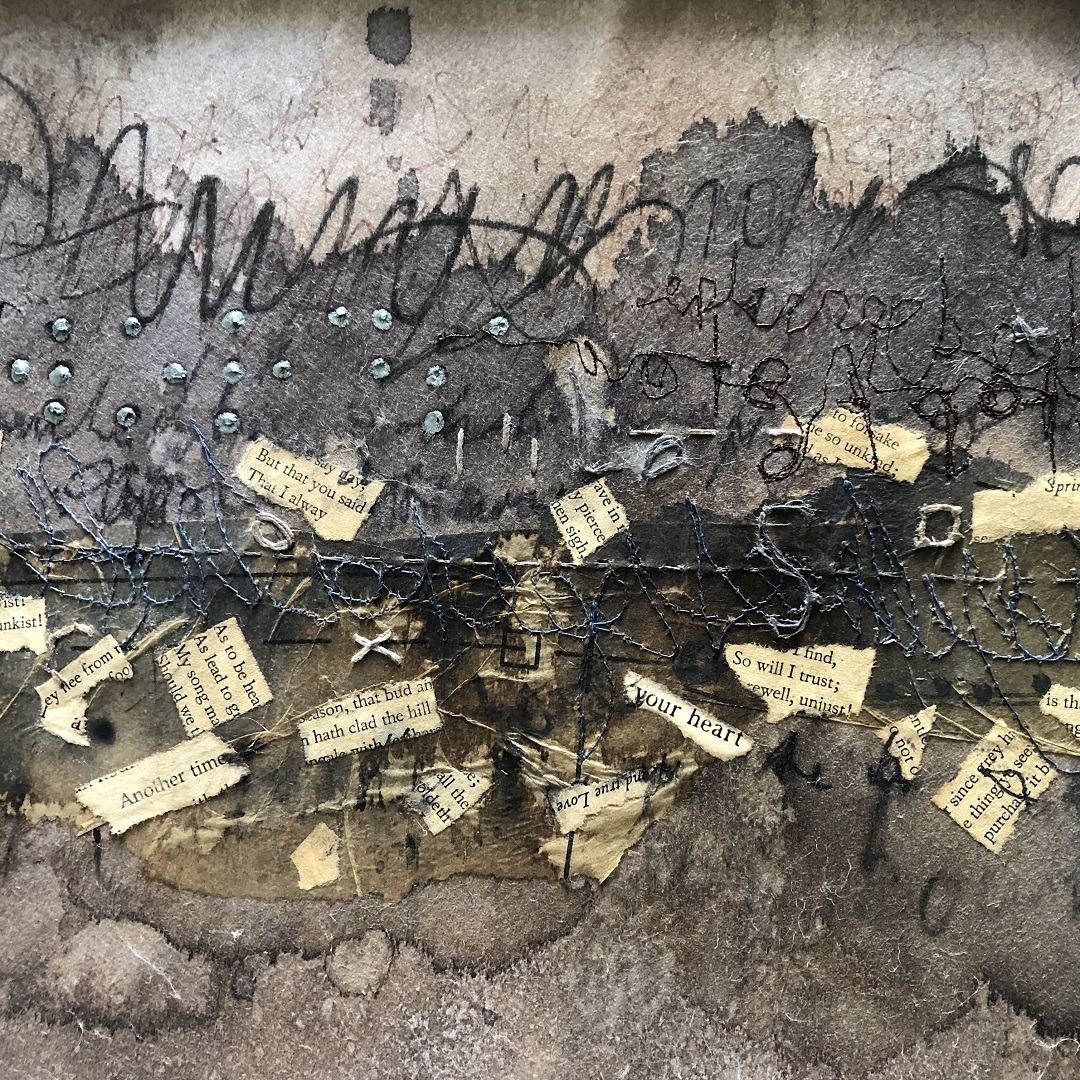
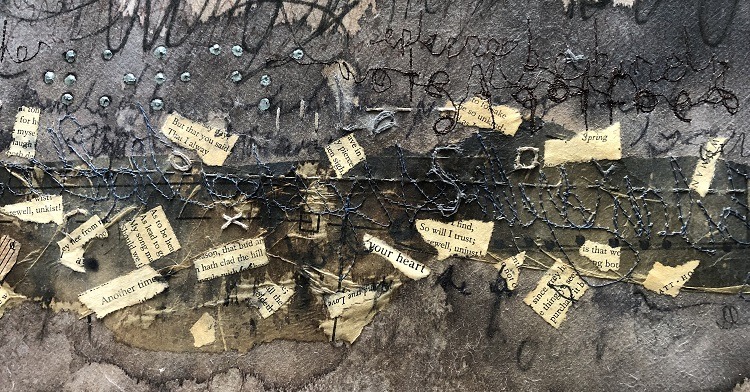

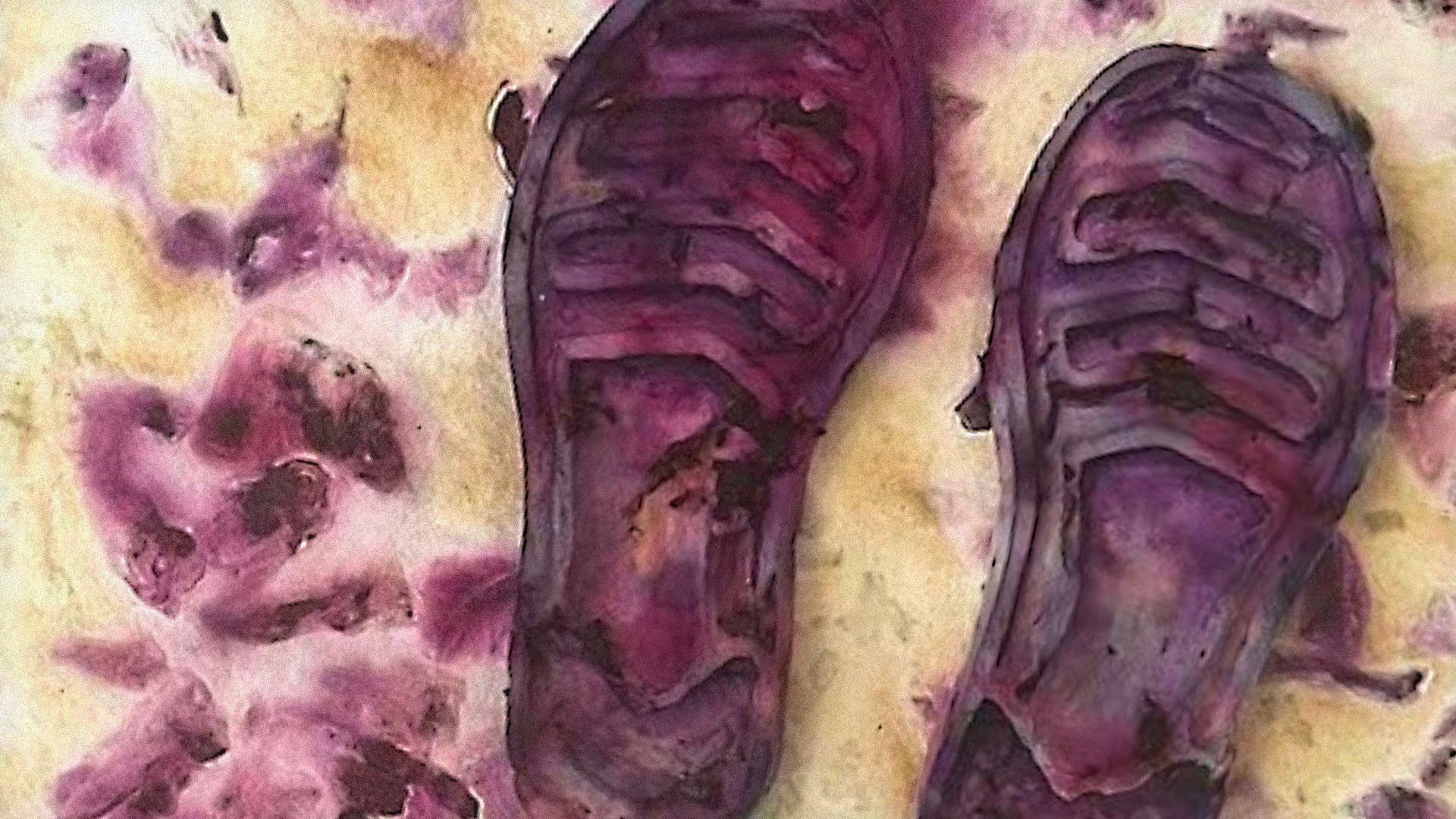
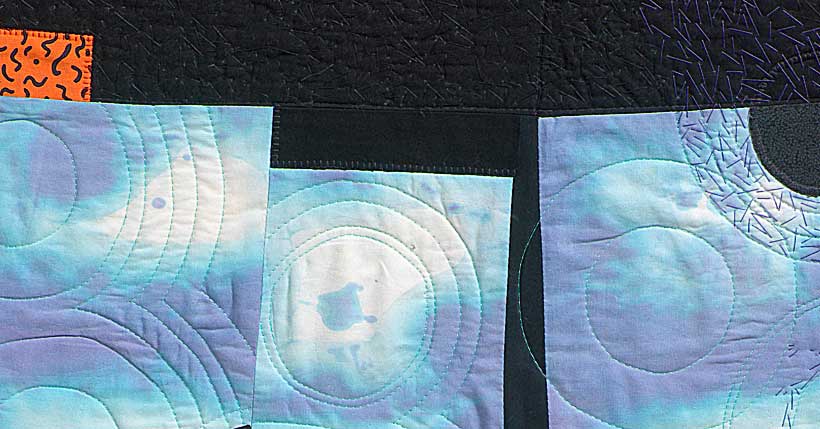
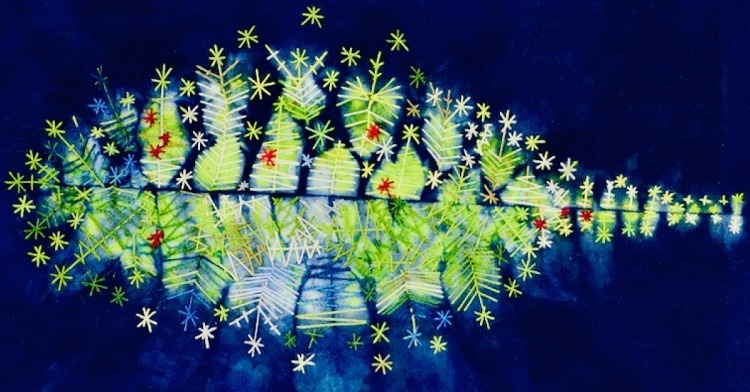
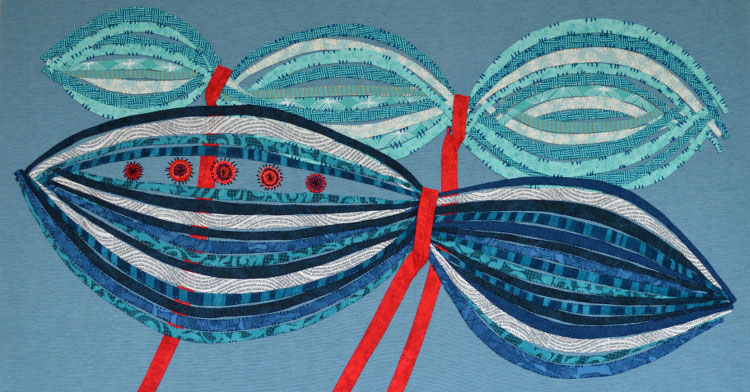
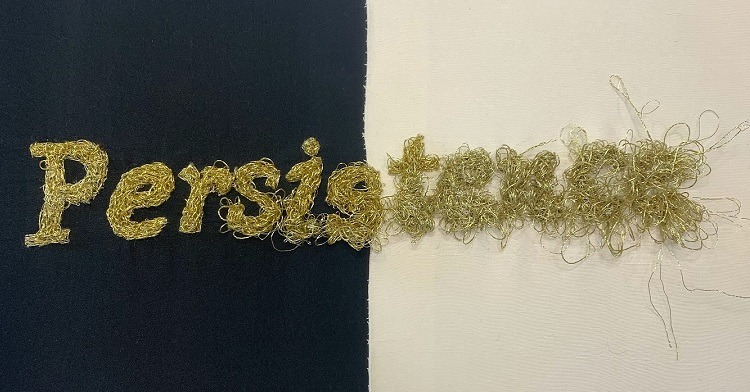
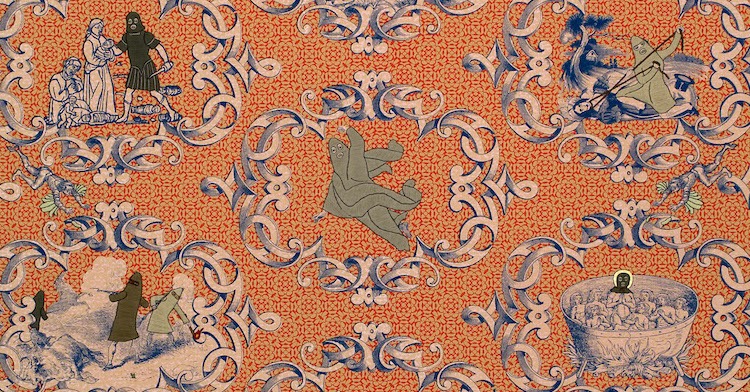
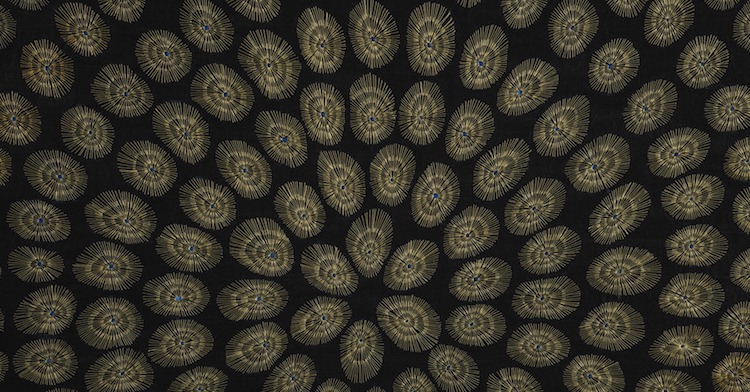
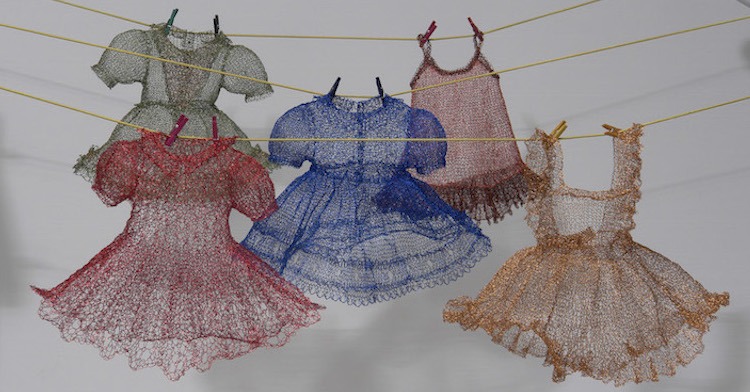
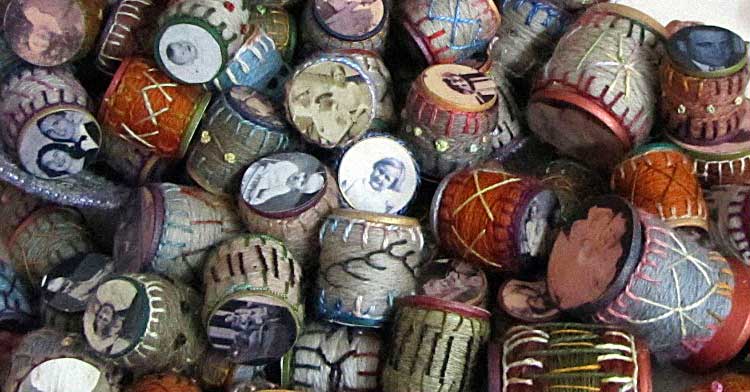
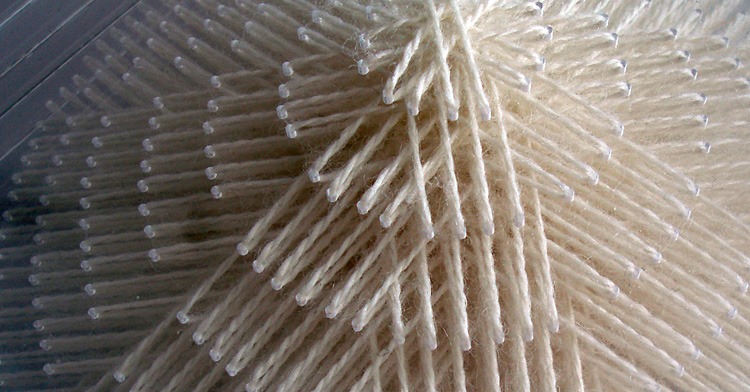
16 comments
beate
klasse
Judy Stephenson
Inspirational
Kathleen Finch
Thank you for sharing your work. I am embarking on my own art career after teaching art for 25 years. It’s good to know there are other artists out there that have accomplished an art career later in life.
Deb Cooper
Good for you. never too late Kathleen! Wishing you the best of luck.
Christina Frodsham
Your work is the inspiration that I have been looking for! I have been working with a limited palette, layers of vintage fabrics, assorted printing techniques and hand stitching, but integrating them cohesively has been a great challenge.
It is my late mother’s birthday today and all of my materials come from her collection. Therefore, with the help of your approach, I will begin again and play with small pieces. Mother’s favorite colors were,”dried weeds”.
Thank you so much!
Deb Cooper
Thanks Christina “dried weeds” sounds like a great colour !
How wonderful to have such a meaningful collection to be creative with. I am sure what you make will be beautiful.
Janice Fried
Your work is beautiful! I too work in mixed media and I was wondering if you attach the bits of paper you use with stitches or glue?
I spent many years as an illustrator so I understand that feeling of getting to a certain age and deciding to do what you love to do. I was so focused on making a living that doing something different felt like a luxury. So happy to see your work!
Deb Cooper
Hi Marianne
Thank you, glad to hear you are enjoying what I do.
Creative wishes, Deb x
Deb Cooper
Hi Janice. When attaching papers I usually glue with diluted matte medium and the stitch over the top. The papers usually go on first before I start to stitch.
Indeed it is a luxury to do something you love.
Thank you for looking at my work. – Deb
Jean Davis
Your work is beautiful.
I would like to use paper in my textile work. How do you fix it so that you can stitch on it? Do you use textile glue?
Deb Cooper
Thanks Jill. I use a combination of free machine and hand stitching. I think the one you mean has been hand stitch using a combination of straight stitches. Deb x
Deb Cooper
Hi Jean – I use diluted matte medium as glue and stitch when its dried – it works for me. Occasionally I use bond-a-web for larger areas. Hope that helps. Deb x
Anne White
Hi Deb. I love your work…especially the piece’Return to the Meadow’. I have been experimenting with rust dyeing and have now built up a collection of pieces ready to be sewn on. I just didn’t have that thing called inspiration … always the hard part of creating something beautiful out of something lost, thrown away, found and then re purposed and re invented as a textile piece. In reading about your work I am now inspired to make a start. Thank you.
Kind regards
Anne
Deb Cooper
That’s great to know that I might have spark the inspiration to get you putting all your pieces together. I am sure it will be beautiful.
Jill Chesser
I’m inspired by your work. The overall feel it evokes is that of the past. Tye tones of Mediaeval masterpieces , subtle , intricate and natural. I would like to know how tge stitching that resembles tge diamond shaoes of barbed wire. By hand or machine?
Thank you for sharing. Jill Vanessa
Marianne Kiss
Dear Deb Cooper,
I’m a very old woman but I would like be more younger for your art – it’s the more beautiful, witty and profound.
Like it very much and congratulate for you!
Have a nice weekxxx
Marianne